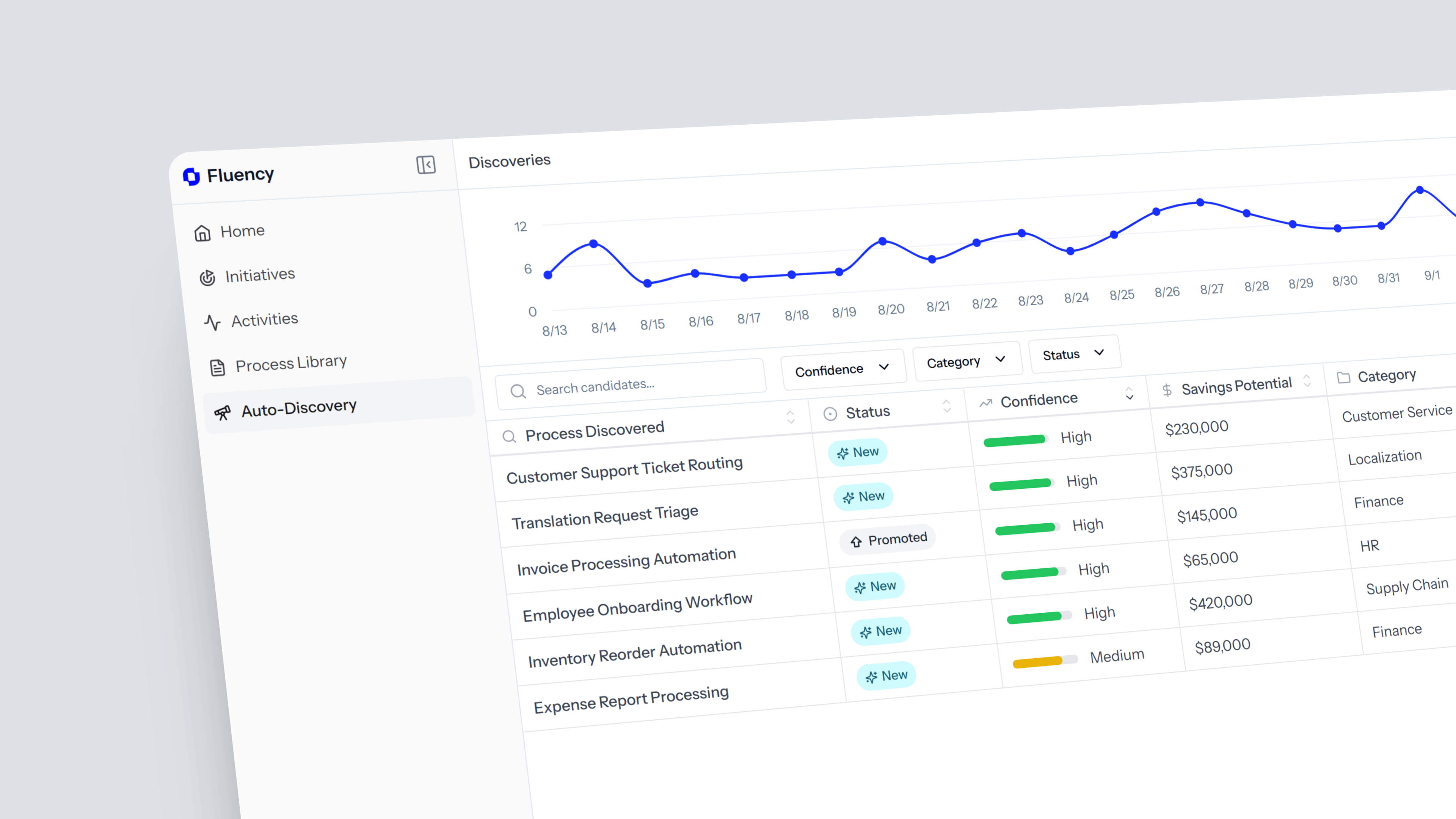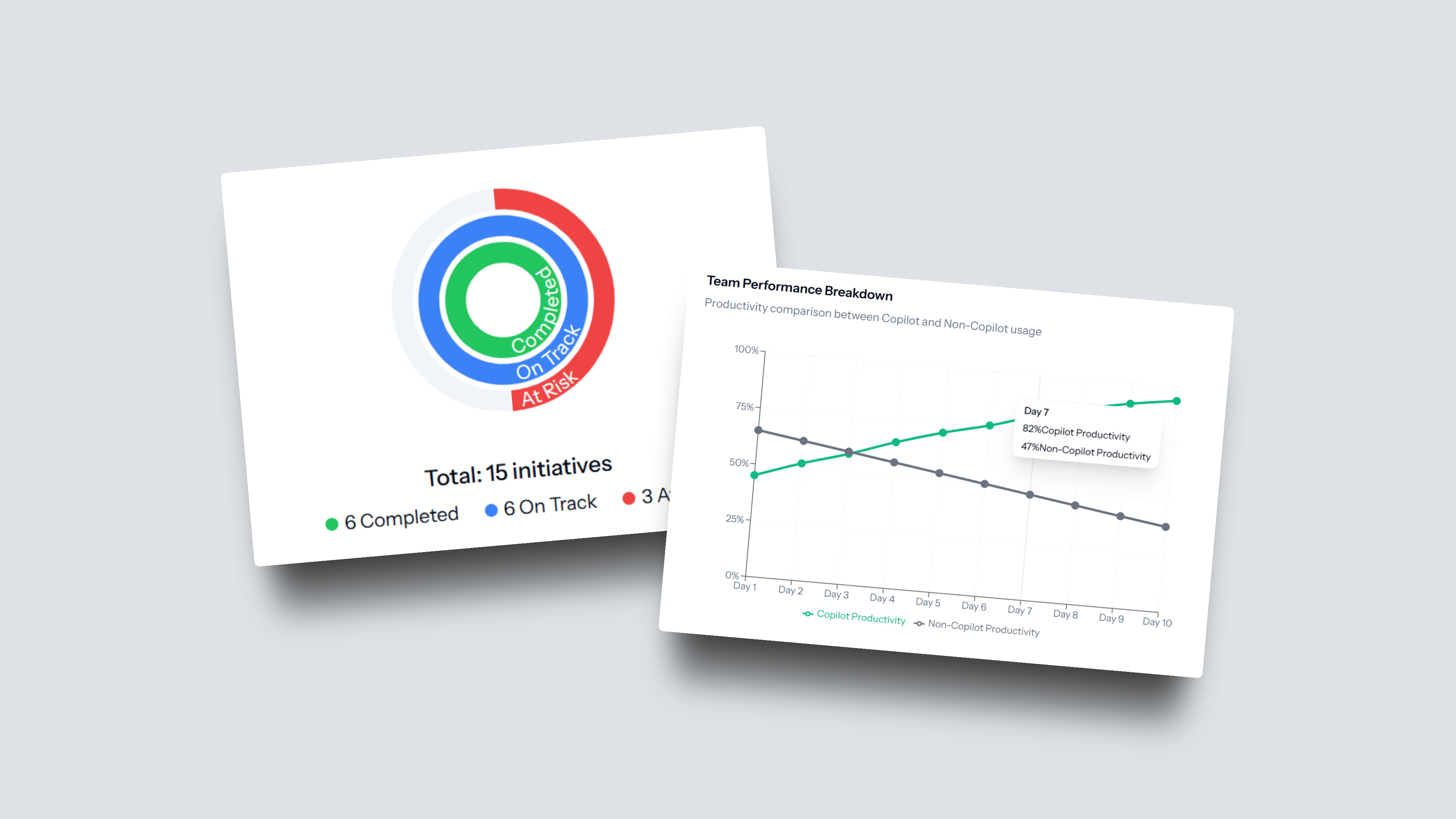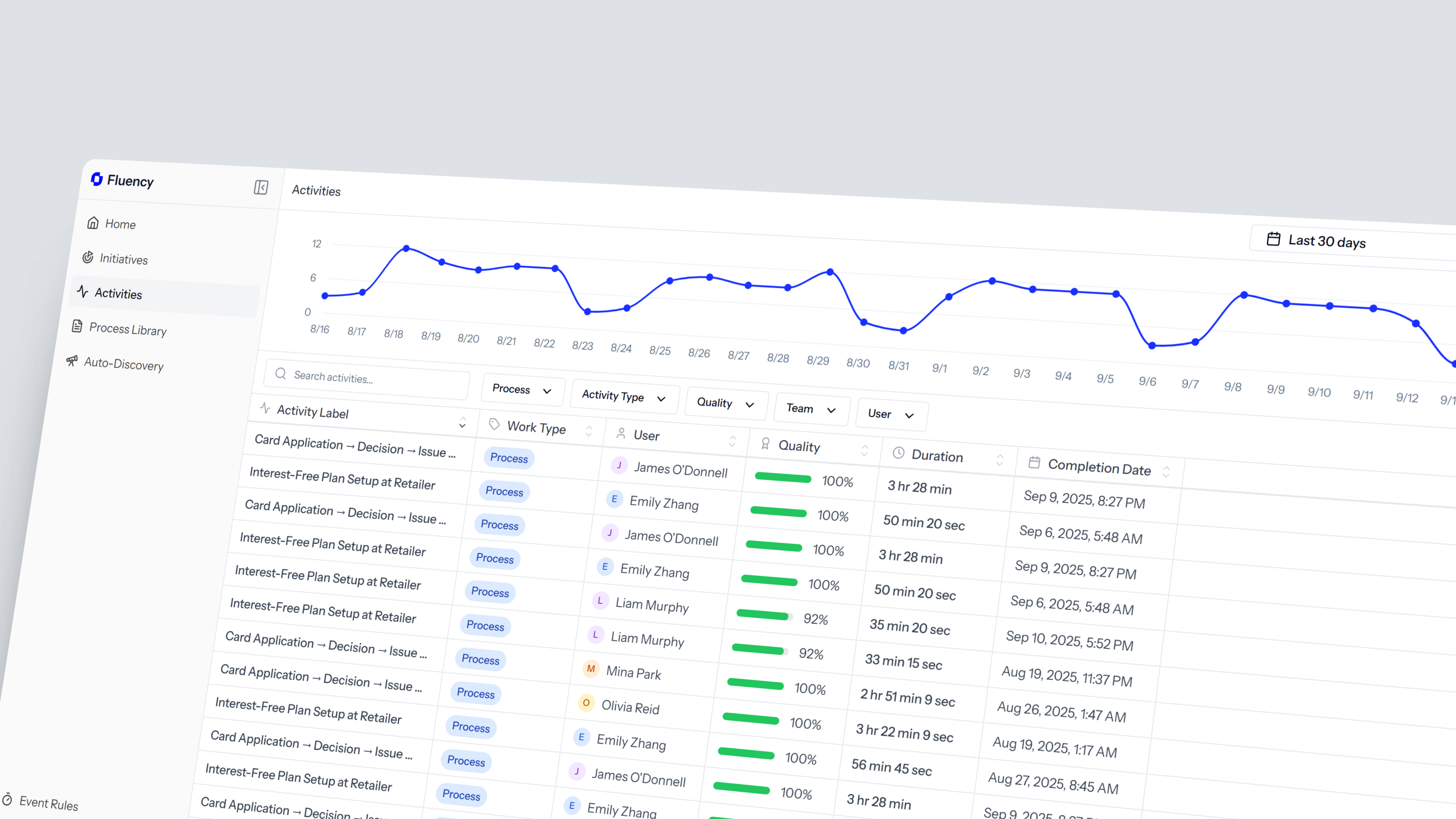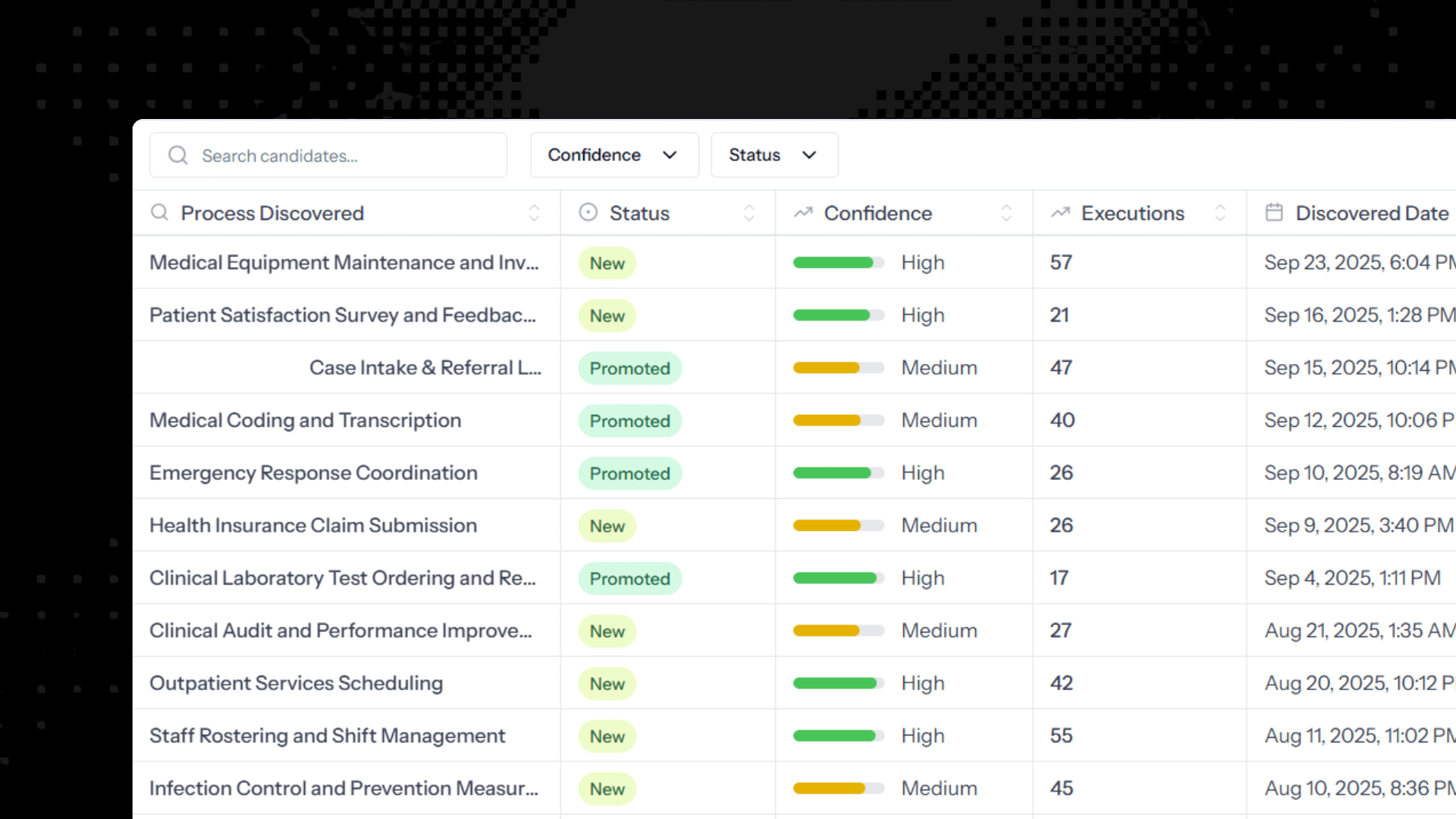We just released the next iteration of Fluency. It's purely a result of listening to what our users are saying and striving to solve their biggest problems. Generating documentation is a good start, but it was always just the first stepping stone on our way to something much, much bigger.
What led us here
Our SOP creation tool serves as a springboard into this next phase of Fluency. There were many directions we could have taken, like compliance tooling, agentic automations, or improved knowledge management. While these are all objectively good ideas, one pain point particularly stuck out in customer conversations: "It's great that we can now easily document all our knowledge, but I don't actually know if it's being done."
Initially, we considered adding analytics to track document views within Fluency. But that's barely scratching the surface. For our customers, stakes are high and process slippage can result in 7-figure penalties. Organizations need to understand what work is actually being done, how processes vary between individuals, and whether they're being executed to appropriate standards, all at a comprehensive, cohesive level compared to the disconnected tools available today.
Process Mining and Task Mining have existed for years, but they take months to set up fragile integrations and only capture a fraction of the bigger picture. You could extract every byte of execution data from your ERP and still be blind to the holes in your team's workflows.
This takes us beyond documents to the layer of work itself. We can now articulate and quantify what work is actually being done, distinguishing between process-based work and ad-hoc tasks.

What Fluency does
We give leaders clear insight into what's actually happening in their teams. Software teams deploy observability tools to see every event in their pipelines. Sales teams auto-log activity to CRMs. This visibility enables data-driven decisions without relying on word of mouth or vibe checks.
This is what we're building, but for all work.
Fluency passively aggregates all computer-based activity from an organization and uses AI to analyze, measure, and act on findings. No integrations, no record buttons, no changes to existing workflows.
Here's what Fluency does:
-
Auto-document processes - Observes work patterns and produces SOPs without manual authoring
-
Measure execution against standards - Captures each process run and compares to the SOP: steps followed, paths taken, time deltas, exceptions
-
Detect and act on gaps - Rules and thresholds trigger notifications, e.g., "If X process isn't completed by Y time" or "If step Z is skipped in >5% of runs"
-
Aggregate from org to instance - Start at organization-level metrics, drill into departments, teams, processes, down to a single execution
-
Include unstructured and ad-hoc work - Classifies and quantifies the non-process tasks that consume time and create risk
-
Track initiatives and prove ROI - Define an initiative (e.g., "roll out Copilot to Finance"), then measure before/after impacts on cycle time, error rates, and throughput
-
Deliver knowledge to end users - Single interface for SOPs and answers, with AI to reduce search and ramp-up time

How people use it
Organizations are using Fluency to:
- See multi-system, multi-team workflows live and pinpoint where to improve
- Prove the ROI of AI and process changes with evidence from real execution
- Explain why KPIs were or weren't hit by tracing the work behind the numbers

Who it's for
This is not a tool to enable micromanagement. This level of visibility isn't for every business.
It's like NBA vs. Sunday league. To be at the top of their game, NBA teams analyze performance of every play to understand the status quo and inform the next move. Where stakes are lower or it's more lifestyle-driven, it makes sense to vibe it out. There's a level of ownership needed over one's work-the best teams share their identified strengths and weaknesses.
Fluency is for teams that want to be the best.
